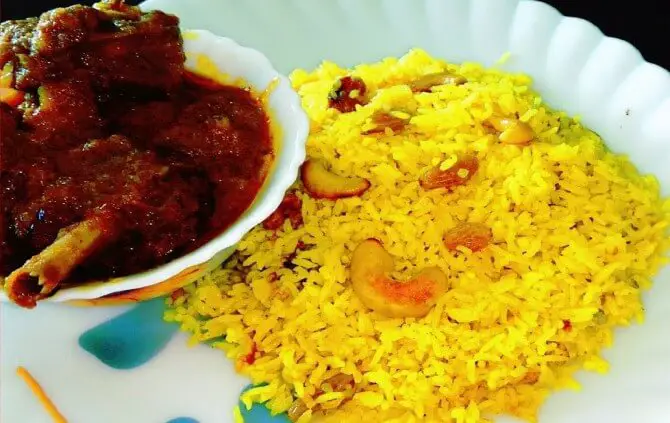Agriculture, with its allied sectors, is unquestionably the largest livelihood provider in India, more so in the vast rural areas. It also contributes a significant figure to the Gross Domestic Product (GDP). Sustainable agriculture, in terms of food security, rural employment, and environmentally sustainable technologies such as soil conservation, sustainable natural resource management, and biodiversity protection, are essential for holistic rural development. Indian agriculture and allied activities have witnessed a green revolution, a white revolution, a yellow revolution, and a blue revolution.
Below are the top 10 agricultural states in India:
1. West Bengal
West Bengal ranks first in paddy and vegetable production in the country. The net cropped area is 52.05 lakh ha. which comprises 68% of the geographical area and 92% of arable land. The cropping intensity is 184%. However, as the State is located in the humid tropic and the Bay of Bengal is close by, it has to often face vagaries of nature like flood, cyclone, hailstorm, etc. Despite the above challenges, Agriculture has been the way of life and continues to be the single most important livelihood of the rural masses in West Bengal. Other than rice and vegetables, West Bengal is also the second-largest producer of tea. Jute, Sesamum, and Tobacco are the other important cash crop, also exported to other countries.
2. Uttar Pradesh
The economics of Uttar Pradesh is based mainly on Agriculture, and round 65 % of the total population is dependent on Agriculture. The contribution of the agriculture sector is significant in the Economic Development of the state. According to the survey of 2014-15, approximately 165.98 lakh hectares (68.7%) land used for cultivation. It is the result of hard work and efforts of the farmers that the state has become self-sufficient in the field of food safety and progressing towards more than the requirement. In the year 2015-16, food green production was 439.47 lakh metric tonnes against the target of 626.6 lakh metric tonnes, out of which production in Kharif was 159.12 lakh metric tonnes and Rabi 280.35 lakh metric tonnes. It is the largest wheat producing state in India and the second largest in cultivating rice.
3. Punjab
Punjab is a region ideal for growing wheat, fruits, and vegetables, which is why Punjab is also referred to as the “Granary of India” or “India’s bread-basket.” It produces 37.83% of India’s wheat and 25.57% of India’s rice (2018-19). The total area of Punjab is just 1.4% of the total area of India, but it produces roughly 12% of the cereals produced in the country. Punjab is the second-largest producer of wheat. Some other important crops are rice, cotton, sugarcane, pearl millet, maize, barley, and fruits. Jowar and bajra are among the fodder crops. The irrigation system largely depends on the canals and tube wells. The Punjab State Has 5.03 M Hectares. The total geographical area, out of which 4.23 m hectares is under agricultural consumption. Agriculture is a way of life here. About 75% of its population depends directly on agriculture.
4. Haryana
Despite recent industrial development, Haryana is primarily an agricultural state. About 70% of residents are engaged in agriculture. Haryana is in the fourth position in food grain production in the country. Wheat and rice are the major crops. Haryana is self-sufficient in food production and the second largest contributor to India’s central pool of food grains. The main crops of Haryana are Wheat, Rice, Sugarcane, Cotton, Oilseeds, Gram Barley, Corn, Millet, etc. There are two main types of crops in Haryana: Rabi and Kharif. The major Kharif crops of Haryana are rice, jower, bajra, maize, cotton, jute, sugarcane, sesame, and groundnut. For these crops, the ground prepared in April – May, and the seeds sown at the commencement of rains in June. The crops are ready for harvesting by the beginning of November. The major Rabi crops are Wheat, tobacco, gram, linseed, rapeseed, and mustard. The ground, prepared by the end of October or the beginning of November, and the crops harvested by March.
5. Madhya Pradesh
Madhya Pradesh, with its large area, enjoys diverse climatic and soil conditions suitable for a broad range of agricultural products. The agriculture sector in Madhya Pradesh forms the backbone of its economy. It contributes almost one-fourth of the Gross State Domestic Product (GSDP) and is the main source of employment for over 65 percent of the population and constitutes about 60- 75 percent of the rural income. The state is a large producer of soybean and wheat. Sharbati variety of famous wheat is grown in Sehore, Vidisha, and Ashok Nagar districts, and in some parts of Bhopal and Hoshangabad. Madhya Pradesh leads in the production of the gram, linseed, green pea, garlic, and coriander. Agro-climatic diversity and topographical variations enable the state to grow a wide range of cereals, pulses, oilseeds, and cash crops, besides being home to myriad varieties of plant species, both in forest areas and outside.
6. Chhattisgarh
The total population of the state is around 2.55 Crore, of which about 70% population is engaged in Agriculture. There are around 37.46 Lakh farm families in the state, with about 80% of farmers falling under the Small & Marginal category. Paddy, Soybean, Urd & Arhar are the major Kharif Crops, while in Rabi season they mainly grow Chickpea and Lathyrus. Some districts of the state have good potential for sugarcane crops, with 04 Co-operative sugar factories running successfully in the state. Other Crops of the state are Maize, Millets, Moong, Wheat, Groundnut, etc. The Central plains of Chhattisgarh are known as the Rice Bowl of Central India.
7. Orissa
The State has about 64.09 lakh hectares of cultivable area out of a total geographical area of 155.711 lakh hectares, accounting for 41.16 percent. The total cultivated area is around 61.50 lakh hectares. Around 40.17 lakh hectares of the cultivable area has acidic soil and approx. 4.00 lakh hectares suffer from salinity. About 3.00 lakh hectares of the cultivable area suffer from waterlogging. Agriculture contributes about 26% in the State Gross Domestic Product (SGDP). About 65% of the workforce depends on agriculture for their employment. The total irrigation potential created is 27.63 lakh hectares in Kharif and 13.31 lakh hectares in Rabi. The total food grain production in the State during 2007-08 is estimated to be 92.13 lakh tonnes, which are approx. 4.06 percent of national food grain production. Rice is the main crop of the State. The severe gaps in yield potential and the technology transfer provide an opportunity to the State to increase production and productivity substantially.
8. Andhra Pradesh
Of Andhra Pradesh’s total population, approximately 62% or 46 lakh families are dependent on the agriculture and allied sectors. The growth of the agriculture and allied sectors, expected to reflect in the upward economic mobility of these families. According to the estimates of Economic Survey of Andhra Pradesh, 2016–17, the food grains production was 156.85 lakh tonnes, and oilseeds production was 24.62 lakh tonnes, an increase from the previous year of 9.09% and 12.9%, respectively. In the food grains segment — paddy, bajra, maize, ragi, and pulses production increased a little, whereas jowar, other millets, and wheat fell. In the oilseeds segment, the production of groundnut and castor saw a drop, while sesamum production improved. The crops during the Kharif season have sufficient water, while farming in the rabi season has suffered due to rainfall deficit and lower levels of water in reservoirs since December 2016.
9. Telangana
Telangana state has considered agriculture as its primary goal to improve farmer community wellness, educate on the latest technical farming knowledge, train framers to boost agricultural production and productivity. In three major zones namely, Northern Zone, Central Zone, and Southern Zone. Crops that are grown in Telangana are Rice, Maize/ Corn, Red Gram, Green Gram, Jowar, Sesame, Castor, Cotton, Groundnut, Soyabean, Black Gram to mention a few. Telangana is in the rice bowl of South India, and RICE is cultivated in about 44 lakh acres. In the recent past, climatic changes have greatly influenced the amount of rainfall, due to which the area cultivated with rice has decreased. other than rice Telangana is a chief cultivator of maize, jowar, cotton, castor, groundnut, and soybean.
10. Karnataka
Agriculture in Karnataka is heavily dependent on the southwest monsoon. While only 26.5 percent of the sown area (30,900 km²) is under irrigation, 64.60 percent of the total geographical area is under cultivation. The state ranks fifth in India in terms of the total area under horticulture. It stands fifth in the production of vegetable crops and third in fruit crop production. It is also the largest producer of spices, aromatic and medicinal crops, and tropical fruits. It is the second-largest milk-producing state after Gujarat. Karnataka is also the second-largest producer of grapes in the country and accounts for the production of 12 percent of total fruits, 8 percent of total vegetables, and 70 percent of coffee in the country. It is the third-largest producer of sugar and ranks fourth in sugarcane production.










